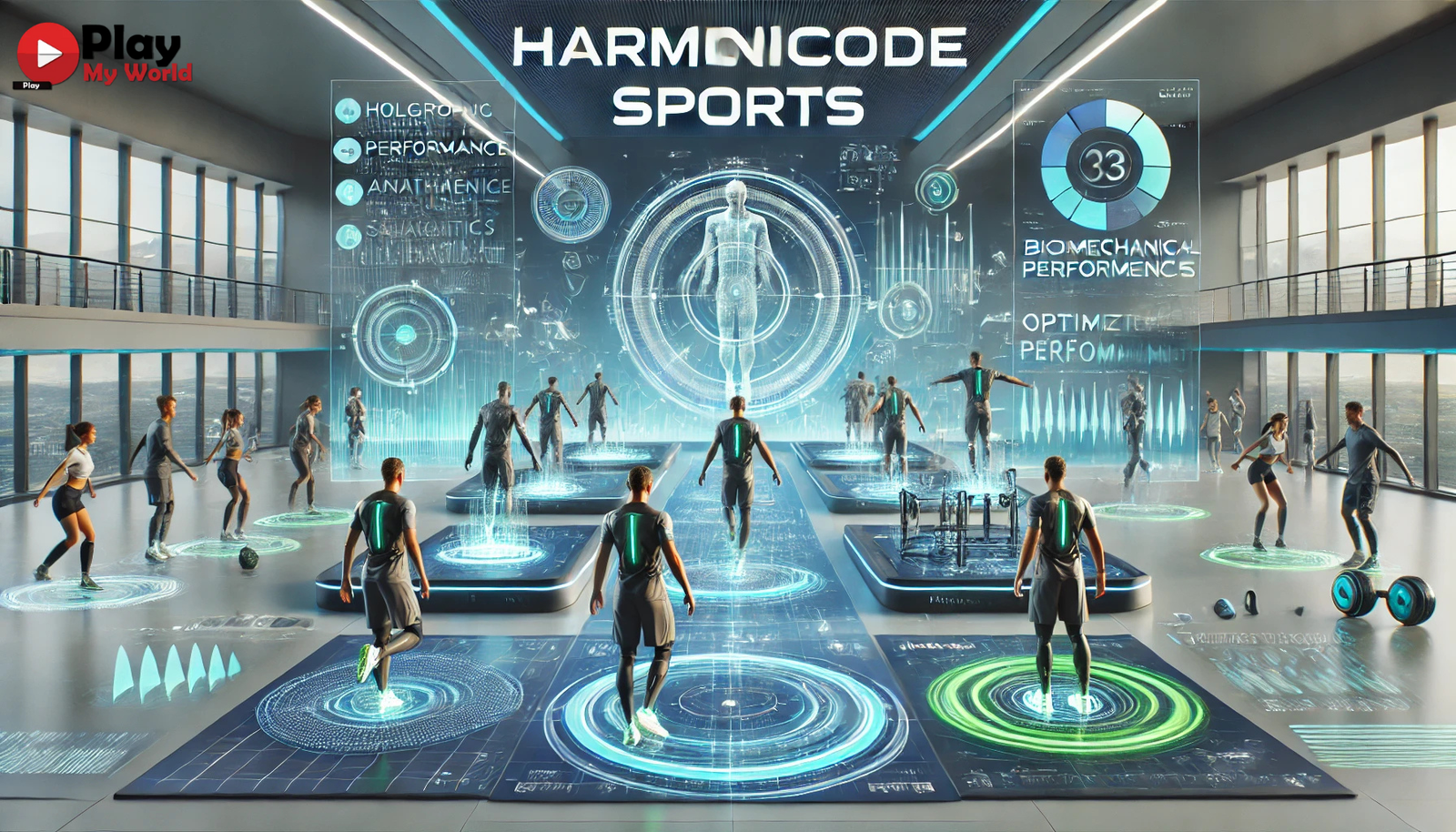Introduction
Sports science has evolved significantly, with new methodologies emerging to enhance athletic performance, prevent injuries, and optimize training efficiency. One such groundbreaking approach is Harmonicode Sports, which integrates biomechanics, physics, movement frequency analysis, and sports technology to help athletes train smarter and perform better.
Harmonicode Sports is based on the concept that every human body operates at specific natural frequencies, and by aligning training with these optimal movement patterns, athletes can maximize efficiency, reduce fatigue, and prevent injuries. This method leverages data-driven analysis, wearable technology, and motion tracking to provide personalized training programs tailored to each athlete’s unique biomechanics.
Understanding the Science Behind Harmonicode Sports
What is Harmonicode Sports?
Harmonicode Sports is a training and performance optimization method that applies physics, biomechanics, and frequency analysis to human movement. The core principle is that each motion an athlete makes has a natural rhythm and frequency—when these movements are fine-tuned, energy efficiency is maximized, injuries are minimized, and performance is enhanced.
This approach is particularly effective because it:
- Identifies inefficient movements that waste energy.
- Enhances neuromuscular coordination, leading to better speed, strength, and endurance.
- Uses motion tracking and wearable technology to analyze and refine athletic movements.
Why is Harmonicode Sports Important?
- Optimized Athletic Performance: Athletes learn to move with greater precision and efficiency, reducing fatigue and enhancing endurance.
- Injury Prevention: By analyzing movement patterns and reducing unnecessary strain, this method lowers the risk of sports-related injuries.
- Personalized Training Plans: Each athlete’s biomechanics and movement frequencies are unique, requiring customized training programs.
- Faster Recovery: Harmonic movement exercises help the body recover quicker after intense training sessions.
Harmonicode Sports is particularly beneficial for elite athletes, fitness trainers, physiotherapists, and sports scientists who want to leverage science-based training methods for long-term performance gains.
Key Principles of Harmonicode Sports
Biomechanics and Motion Efficiency
Every sport requires precise movement mechanics, whether it’s sprinting, swimming, or weightlifting. Harmonicode Sports analyzes:
- Stride length, cadence, and joint movement to improve running efficiency.
- Jumping mechanics and landing forces to enhance vertical leap performance.
- Posture and muscle activation for injury-free weightlifting.
By optimizing these biomechanical patterns, athletes can reduce energy wastage and improve power output.
Frequency and Resonance in Human Motion
Each body movement generates a specific frequency, and aligning training with these frequencies helps athletes:
- Minimize unnecessary exertion by working with natural body rhythms.
- Enhance endurance through optimized breathing and energy conservation.
- Improve reaction times by syncing movement patterns with neural signals.
Wearable Technology and AI-Powered Analytics
Harmonicode Sports integrates smart sensors, AI-powered analysis tools, and real-time motion tracking to:
- Measure an athlete’s stride, acceleration, and muscle engagement.
- Identify inefficient movements that cause fatigue or stress injuries.
- Provide instant feedback to optimize training techniques.
Injury Prevention and Recovery Techniques
By fine-tuning movement frequencies and biomechanical balance, this method helps athletes:
- Identify high-risk movements before injuries occur.
- Use harmonic training drills to strengthen weak muscle groups.
- Implement low-impact recovery exercises for faster healing.
Step-by-Step Guide: Implementing Harmonicode Sports in Training
Step 1: Assess Movement and Biomechanics
Before implementing Harmonicode training, conduct a detailed biomechanical analysis using:
- Motion-tracking cameras to record movement patterns.
- Wearable sensors to measure muscle activation and force output.
- AI-powered software to detect inefficiencies in movement.
Step 2: Develop a Personalized Training Plan
After analyzing data, customize the athlete’s training by:
- Adjusting stride length and foot placement in running sports.
- Modifying jumping and landing mechanics for agility-based sports.
- Refining muscle activation and posture in weightlifting.
Step 3: Incorporate Real-Time Feedback Tools
Use wearable technology to provide immediate feedback on:
- Cadence and stride efficiency for runners.
- Arm positioning and stroke mechanics for swimmers.
- Joint stability and explosive power for jumpers and lifters.
Step 4: Implement Harmonic Recovery Techniques
- Introduce low-impact stretching and vibration therapy for muscle recovery.
- Use neuromuscular stimulation to enhance coordination and flexibility.
- Monitor heart rate variability (HRV) to track recovery progress.
Step 5: Analyze Performance and Adjust Training
Continuously track progress using:
- AI-driven performance reports.
- Biomechanical assessments every 4–6 weeks.
- Recovery analytics to ensure optimal rest cycles.
Harmonicode Sports in Different Sports
Running and Sprinting
- Enhances stride efficiency and ground reaction time.
- Reduces risk of hamstring and ankle injuries.
Swimming
- Optimizes stroke frequency and breathing coordination.
- Improves water resistance management for speed.
Soccer and Basketball
- Enhances agility, reaction time, and footwork mechanics.
- Prevents knee and ankle overuse injuries.
Weightlifting and Strength Training
- Fine-tunes joint alignment and muscle activation patterns.
- Increases explosive power and lifting efficiency.
Martial Arts and Combat Sports
- Improves speed, balance, and reaction time.
- Enhances muscle recovery and injury resilience.
Common Mistakes to Avoid When Using Harmonicode Sports
- Skipping Biomechanical Assessments: Training without proper movement analysis can lead to inefficiencies.
- Overtraining Without Recovery: Ignoring recovery cycles can cause long-term injuries.
- Using a One-Size-Fits-All Approach: Every athlete has unique biomechanics requiring personalized plans.
- Failing to Track Progress: Lack of data-driven tracking can hinder improvements.
- Ignoring Wearable Tech Insights: Real-time analytics provide critical feedback that should not be overlooked.
Conclusion
Harmonicode Sports represents a cutting-edge approach to athletic training, combining biomechanics, movement frequency analysis, and AI-powered technology to help athletes achieve peak performance while minimizing injuries. By leveraging personalized training methods, wearable sensors, and harmonic movement optimization, this methodology is redefining the future of sports science.
For athletes, coaches, and trainers looking to stay ahead of the competition, Harmonicode Sports offers a scientific and structured approach to enhancing physical performance. As technology continues to advance, this methodology will become a key component in elite sports training worldwide.




